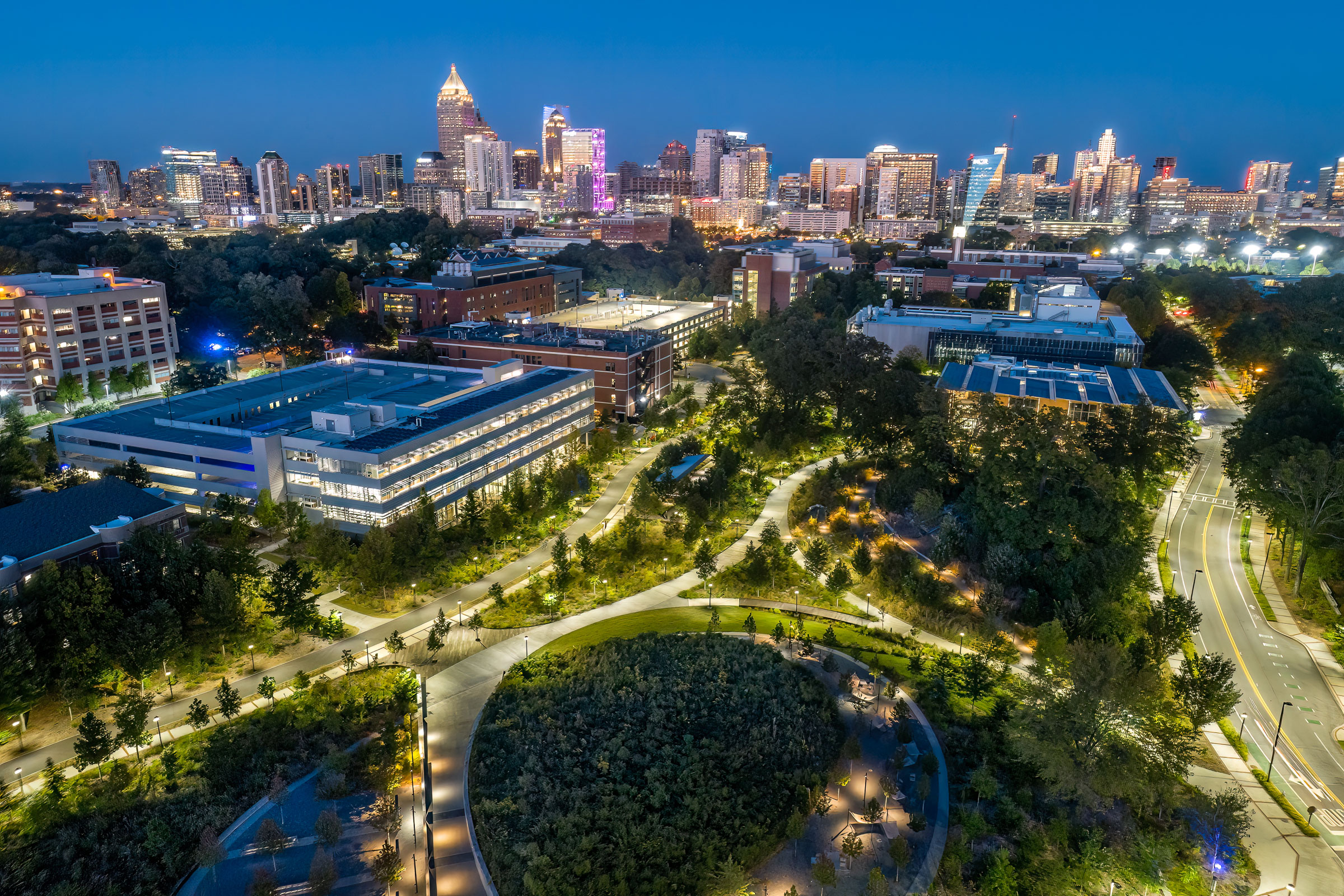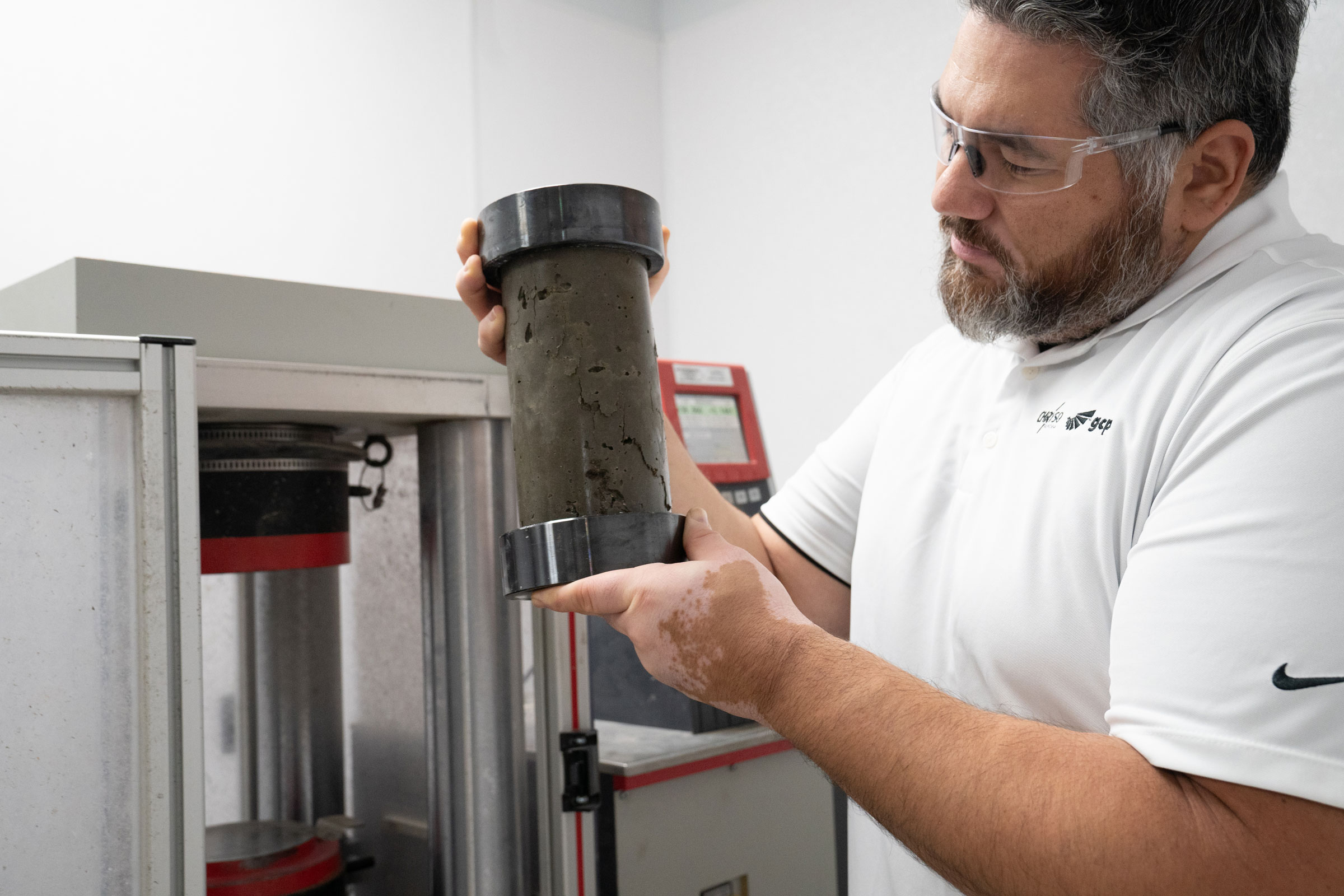Story at a glance:
- EskewDumezRipple principal Z Smith illuminates a holistic approach to decarbonization using grid-aware architecture.
- EDR has helped flip the script on the logic of sustainability by focusing on impact and visibility in decision-making.
Using energy more efficiently will provide better environments, improve mental health, and increase human and building productivity as much as it will impact climate change, if not more, says Z Smith, principal at New Orleans-based EskewDumezRipple (EDR), a national practice with deep roots in the South.
As a signatory to the AIA 2030 Commitment—the actionable climate strategy aimed at reaching net zero emissions in the built environment—EDR takes sustainability seriously. Smith, who came to architecture through a career in physics and engineering, says long-term sustainability must be holistic, and buildings must become contributors.
“My work at EDR is focused on shaping buildings to be much better on energy use in pursuit of better environments for people,” Smith says, adding that buildings can be a lot like infants with constant demands. “‘Feed me,’ ‘Clean up my waste.’ We’re trying to make buildings more like responsible adults, asking not just what the environment can do for them, but what they can do for the environment.”
Smith says autonomous buildings, where the entire sphere of public architecture is disconnected from the grid, is more of a survivalist vision than a likely reality. “The big opportunity is for buildings to have enough onsite equipment to be active, grid-aware participants in infrastructure as network citizens.”
We recently sat down with Smith to learn more about EDR’s efforts to help clients decarbonize.
Tell us about EDR’s work with Georgia Tech.
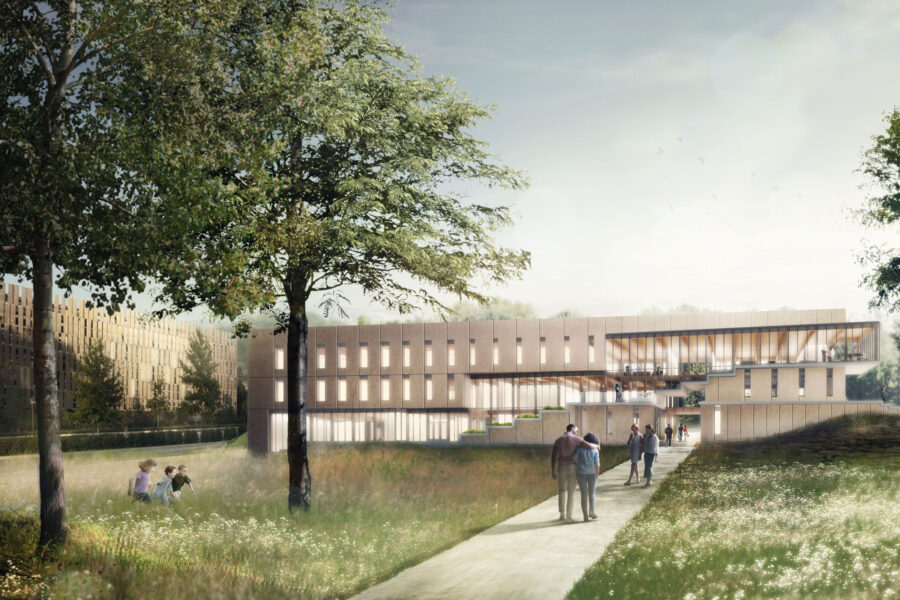
In 2015 EDR responded to a design competition by Georgia Tech to develop the first building in the southeastern US to earn a Living Building Challenge certification. Rendering courtesy of EskewDumezRipple
In 2015 EDR responded to a design competition by the Georgia Institute of Technology (Georgia Tech) to develop the first building in the southeastern United States to earn a Living Building Challenge (LBC) certification. Along with two other teams, EDR’s team was chosen from more than a dozen international teams to explore what a Living Building could be in this climate. The competition helped EDR raise our sights on integrated design, where designers, social scientists, and specialists work parallel rather than sequentially. This allowed us to develop some radical ideas about what a building could be.
EDR’s big idea was to put the building’s wastewater treatment plant front and center for all to see when they walked in. If you want people to appreciate their impact, they must be made aware of where the things we produce go when we’re done with them. Ultimately another team was awarded the Living Building Challenge project, but we learned a lot, and this changed the nature of what Georgia Tech asked for in its subsequent projects.
The following RFP for a new construction building issued by Georgia Tech called for a public-facing wastewater treatment plant as a critical component of a mixed-use office building. EDR won that project and designed The Dalney Building—a 54,500-square-foot office building designed to host a blackwater reclamation system on the first level. EDR not only finished The Dalney Building before the Living Building competition project but also believes they achieved much of competition building’s overall performance at half the cost.
What is “grid-aware architecture?
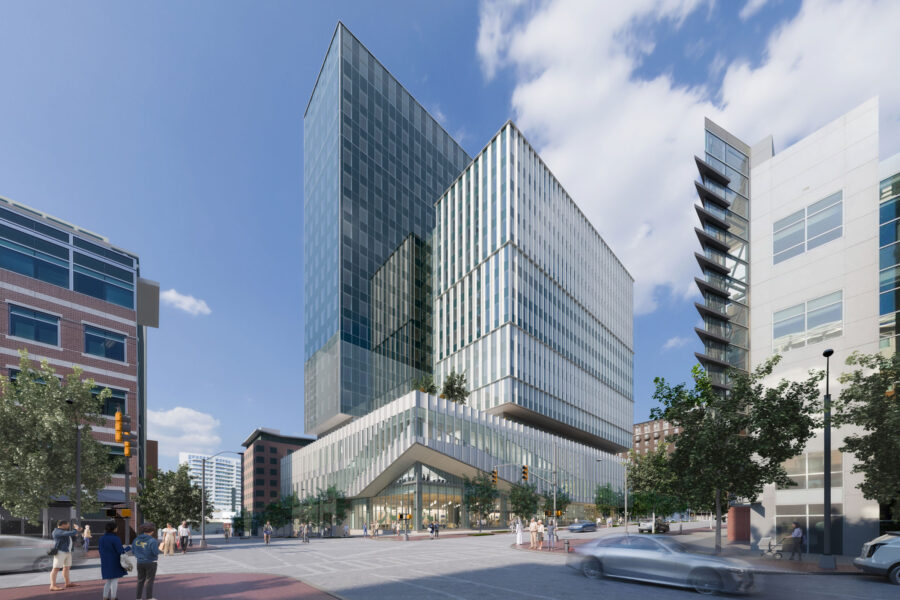
Tech Square 3 is planned to be grid-aware, meaning the all-electric building can shift demand to lower its overall carbon intensity. Rendering courtesy of EskewDumezRipple
It is essential to understand that it is not just about low-carbon construction or zero-carbon operation; it’s about designing a building tuned to pull from the grid when carbon intensity is lowest.
For example, EDR and Georgia Tech are working on Tech Square 3—a 400,000-square-foot academic tower in Midtown Atlanta. This building will be grid-aware, meaning this all-electric building can shift demand to lower its overall carbon intensity. This building’s Energy Use Intensity, or EUI, is projected to be under 25 compared to 90 for a typical office tower in Midtown. This is being achieved at a cost-per-square-foot comparable to a conventionally designed building, essentially at no extra first cost.
Tell us about Georgia Tech’s Climate Action Plan.
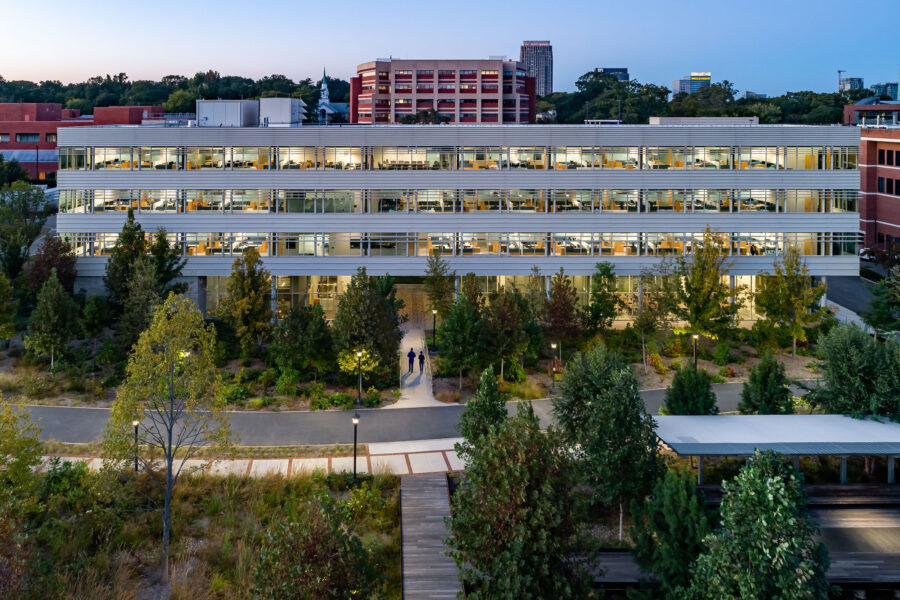
The Dalney Building at Georgia Tech. Photo courtesy of EskewDumezRipple
Roughly 30 years ago, long before EDR’s involvement, Georgia Tech (GT) embarked on a visionary plan to revitalize the campus experience in the heart of Atlanta as a performative landscape of intertwined uses and purposes. Project by project they have implemented this vision, which they call the “Eco-Commons,” to become a green necklace weaving its way through campus.
As an extension of the relationship established on The Dalney Building and Tech Square 3, EDR was asked to join GT as an advisor on their emerging Climate Action Plan (CAP). Beginning in 2022 almost 100 campus stakeholders convened across nine subject matter working groups to develop climate mitigation and resiliency strategies to cut net emissions in half by 2030 and achieve net-zero emissions by 2050, while leveraging the GT’s academic and research strengths.
Most of GT’s immediately reducible emissions are Scope 2, or those driven by the generation of the electricity it uses. But its Scope 1 emissions, driven mostly by its campus steam loop (where steam generated by central boilers is piped to campus buildings), are not negligible.
Nearly a century old, Georgia Tech considered replacing the steam loop with like-for-like until CAP analysis revealed that replacing it with a thoroughly modern warm-water loop that harvests wasted heat from campus cooling towers could be accomplished for less money upfront and would cost less to operate; fed by clean, renewable electricity, this can help eliminate Scope 1 emissions.
What are the big takeaways so far?
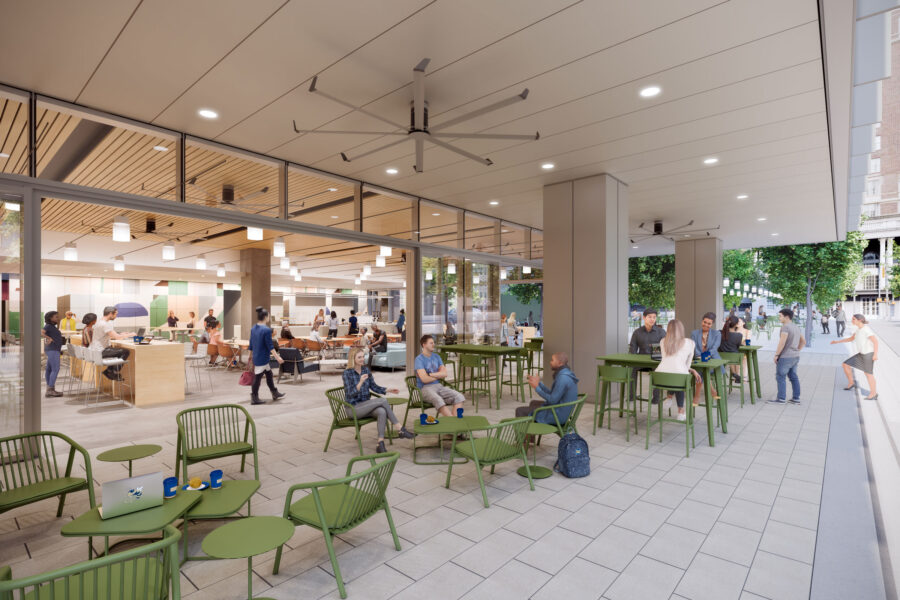
EDR and Georgia Tech are working on Tech Square 3—a 400,000-square-foot academic tower in Midtown Atlanta. Rendering courtesy of EskewDumezRipple
The CAP aims to act as a bridge between climate planning and land use planning. In considering the positive impact of providing more student housing, the CAP seeks to minimize the carbon footprint on campus and reduce that associated with commuting students, faculty, and staff. During planning it came to be appreciated that while Georgia Tech has enough sites to double the existing real estate portfolio, the emissions caused by building that much space would be greater than current Scope 1 emissions campus-wide.
Rather than trying to meet future needs entirely by adding buildings, GT’s plan highlights the importance of using existing assets far more space-efficiently first. For example, the average academic office is typically occupied only a few hours a week. Finding ways to provide all the privacy people need when they need it, but not building offices that stand empty most of the time, will be key. The plan prioritizes as-needed offices and classrooms, accelerated virtual learning programs to limit the need for to-campus travel, and more consistent building metering.
On many university campuses not all buildings are fully metered, and so it can be difficult to know which assets are most badly in need of improvement. Though it might be easy to imagine that the oldest buildings would perform the worst on energy due to age and older building methodologies, that doesn’t prove to be the case. For instance, buildings built in the 1920s were designed for daylight and cross ventilation, making them inherently easier to illuminate and cool. However, buildings constructed during the ’60s, ’70s, and ’80s seemed to have turned away from the physics of nature to their detriment. Transforming the existing building stock—especially the often under-loved buildings constructed 30 to 50 years ago, is going to be key to achieving their environmental goals—with the added benefit of providing better places for learning, which is, after all, the mission of a great university.

